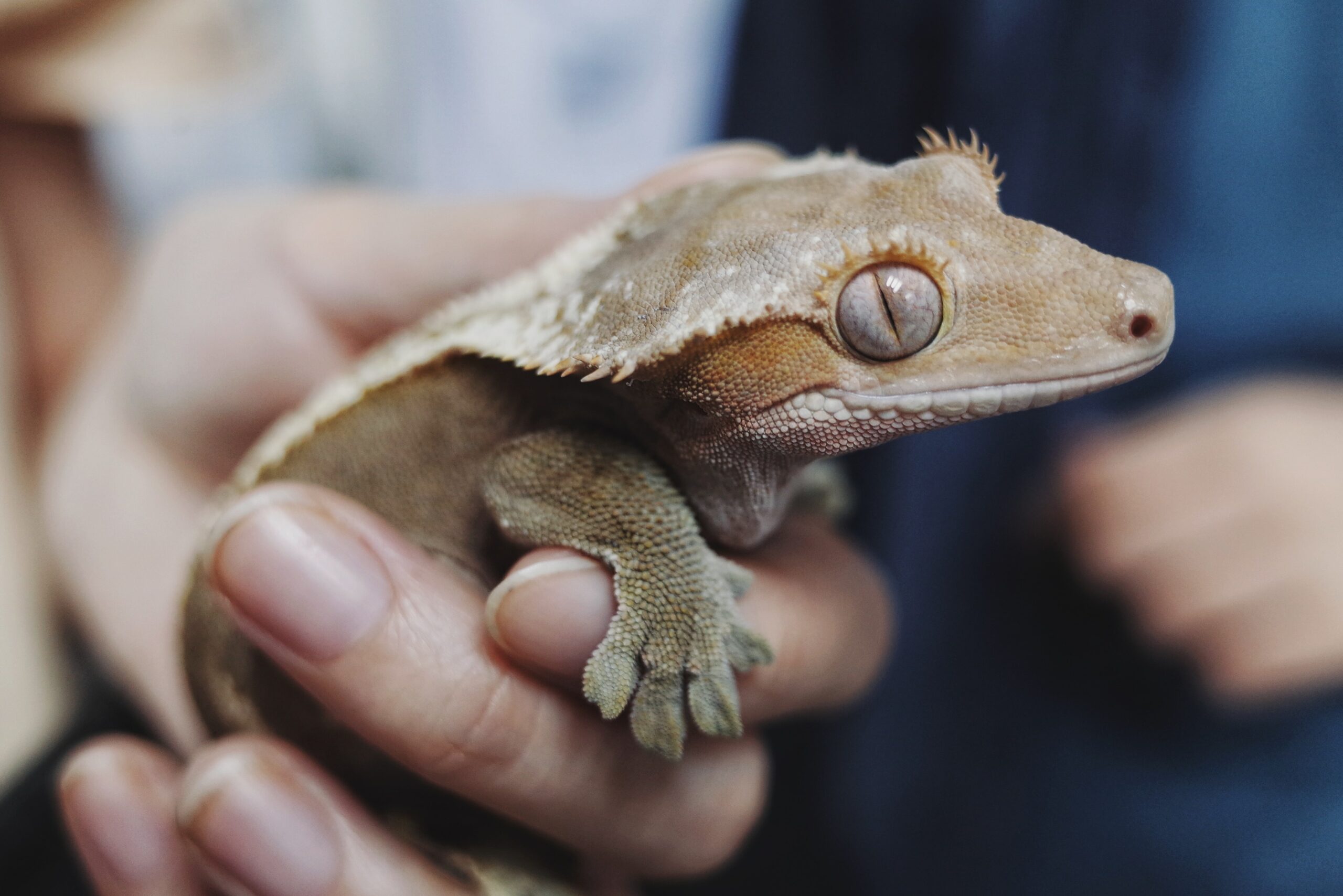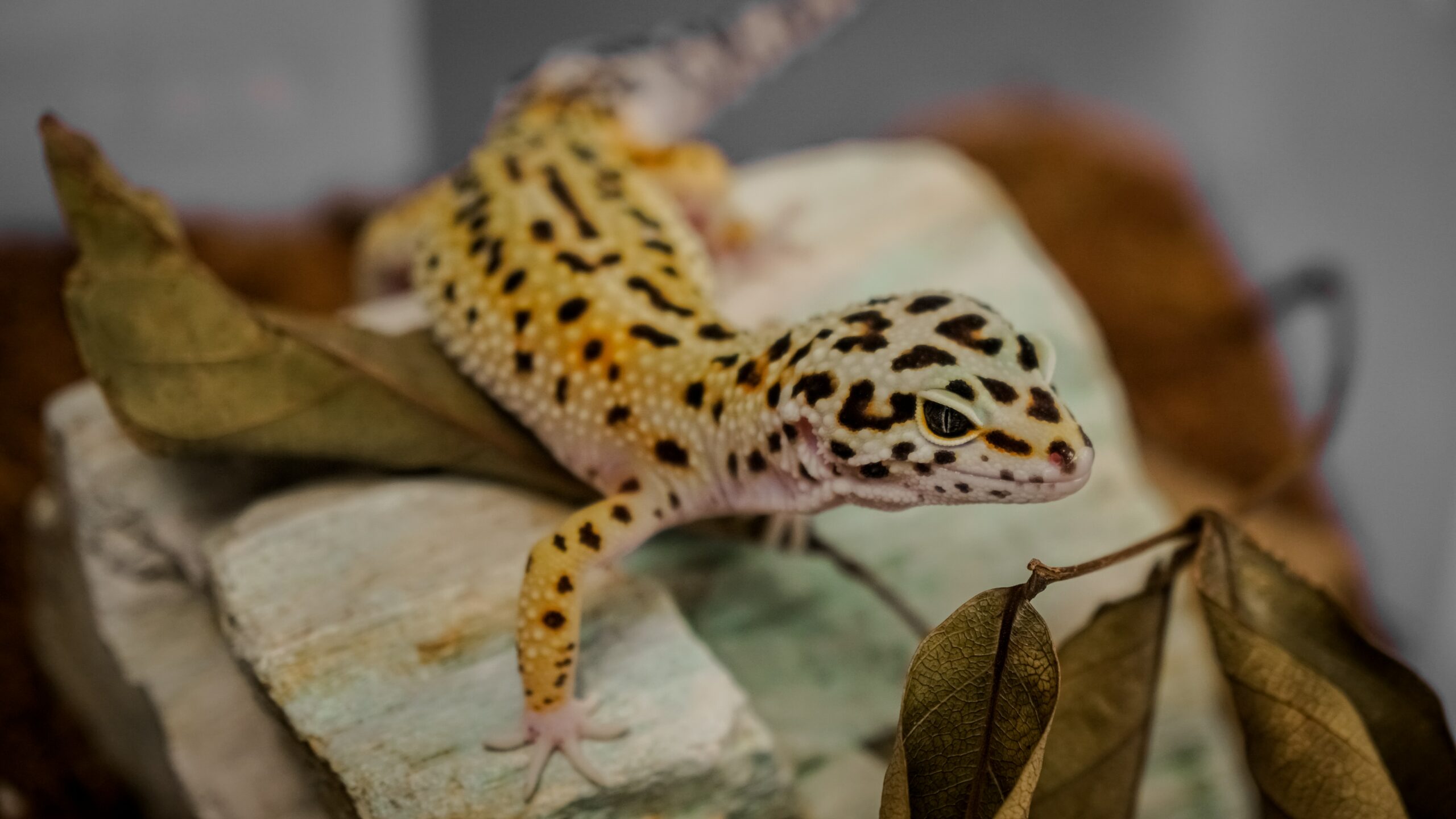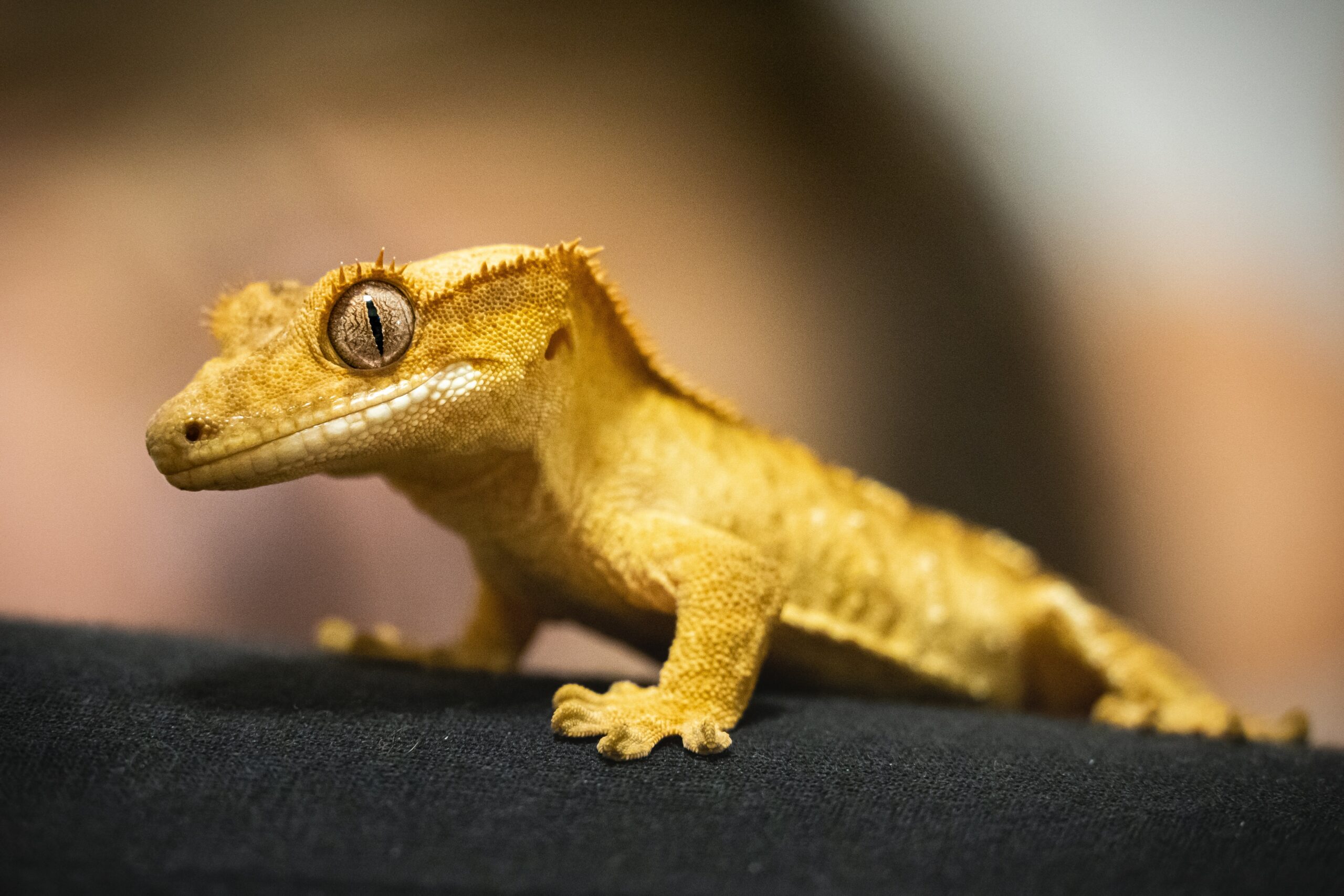Are you considering a pet lizard? Lizards make fascinating companions, with their unique appearances and captivating behaviors. If you’re a beginner looking to embark on the exciting journey of lizard ownership, it’s important to choose a species that is well-suited for beginners.
In this article, we will guide you through the process of selecting the perfect first lizard. From understanding the key considerations to creating a suitable habitat, we’ll provide you with valuable insights to ensure a successful and rewarding experience as a lizard owner.
How to Choose the Ideal Lizard for Your First Reptile Pet?
Selecting the ideal lizard for your first reptile pet involves considering several factors. Start by assessing your level of experience and the amount of time and effort you can dedicate to lizard care. Consider the size of the lizard and whether it suits your living space.
Additionally, evaluate the temperature and humidity requirements, as well as the diet and exercise needs of different species. Seeking advice from reputable breeders or herpetologists can provide valuable guidance in choosing a lizard that matches your lifestyle and preferences.
What Are the Key Considerations for First-Time Lizard Owners?

As a first-time lizard owner, there are essential considerations to keep in mind. Research the lifespan of the species you’re interested in, as some lizards can live for several decades. Assess the financial commitment required for proper housing, heating, lighting, and veterinary care.
Additionally, familiarize yourself with the specific handling requirements and potential risks associated with different species. Understanding these factors will help you make an informed decision and provide the best possible care for your new lizard companion.
What Are the Best Lizard Species for Beginners?
When it comes to choosing the best lizard species for beginners, several options stand out. These species are known for their manageable size, docile temperament, and adaptability to captive environments. Here are some of the top lizard species recommended for beginners:
-
Bearded Dragons: These friendly and sociable lizards are a popular choice for beginners. They are relatively easy to handle and have a diverse diet, consisting of both insects and vegetables.
-
Leopard Geckos: Known for their striking appearance and calm demeanor, leopard geckos are a great choice for novice lizard owners. They are low-maintenance and have unique traits, such as the ability to regenerate their tails.
-
Crested Geckos: With their fascinating crests and ability to climb, crested geckos make captivating pets. They have relatively simple care requirements and are well-suited for smaller living spaces.
-
Blue-Tongued Skinks: These lizards are known for their distinct blue tongues and friendly nature. They have a varied diet and can adapt to different climates, making them a versatile choice for beginners.
-
Anoles: Anoles, particularly the green anole, are small and relatively easy to care for. They are active during the day and provide an interesting display of behavior and color changes.
Are Lizards Low-Maintenance Pets for Beginners?
While lizards can be wonderful pets, it’s important to dispel the notion that they are low-maintenance animals. Lizards require specific environmental conditions, such as temperature and humidity control, which need to be consistently monitored.
They also have dietary needs that must be met to ensure their overall health and well-being. Regular cleaning of their enclosures and providing mental and physical stimulation are crucial aspects of responsible lizard ownership. It’s important to be prepared for the commitment and dedication required to care for a lizard properly.
Which Lizard Species Are Recommended for Families with Kids?
If you’re considering a lizard as a family pet, certain species are particularly suitable for households with children. Bearded dragons are often a top choice due to their docile nature and tolerance for handling. Their relatively larger size also makes them easier for children to handle safely.
Leopard geckos and crested geckos are also popular choices, as they are generally calm and well-suited for interaction with children. However, parental supervision is crucial to ensure both the safety of the lizard and the children.
What Size of Enclosure Is Suitable for a Beginner Lizard?
Providing an appropriate enclosure is essential for the well-being of your lizard. The size of the enclosure will depend on the species you choose. As a general guideline, a minimum of a 40-gallon tank is suitable for small lizard species, such as leopard geckos or crested geckos.
Larger species, like bearded dragons, will require more spacious enclosures. Ensure that the enclosure offers enough space for your lizard to move and explore comfortably. Proper ventilation, secure lids, and escape-proof design are also vital considerations to ensure the safety of your pet.
How to Create the Perfect Habitat for Your First Lizard?
Creating the perfect habitat for your first lizard is essential to ensure their health and well-being. Start by choosing an enclosure of appropriate size, providing enough space for your lizard to move and explore comfortably.
Select a suitable substrate for the enclosure floor, such as reptile carpet or natural substrates. Establish a temperature gradient by using heat lamps and heating pads to mimic the lizard’s natural habitat. Lighting is crucial, so opt for UVB bulbs to simulate natural sunlight and promote vitamin D synthesis.
Adding decor and hiding spots like plants, rocks, and secure hiding areas will create a stimulating environment for your lizard.
| Aspect | Description | Tips |
|---|---|---|
| Enclosure Size | Ensure enough space for your lizard to move and explore. | Provide at least 40 gallons for small species, larger for bigger ones. |
| Substrate | Choose a suitable bedding material for the enclosure floor. | Options include reptile carpet, paper towels, and natural substrates. |
| Temperature Gradient | Create a temperature gradient to mimic the lizard’s natural habitat. | Use heat lamps and heating pads to establish warm and cool areas. |
| Lighting | Provide the right type and duration of lighting for your lizard. | Use UVB bulbs to simulate natural sunlight and promote vitamin D synthesis. |
| Decor and Hiding Spots | Add plants, rocks, and hiding spots to create a stimulating environment. | Ensure secure hiding areas to reduce stress and promote natural behavior. |
Do Beginner Lizards Require Special Lighting and Heating?
Proper lighting and heating are crucial for the well-being of your beginner lizard. Most lizard species require a combination of UVA and UVB lighting to replicate natural sunlight. UVB lighting aids in the synthesis of vitamin D3, essential for calcium absorption and bone health.
Heating elements such as heat lamps and heating pads are necessary to provide the appropriate temperature gradient within the enclosure. Regular monitoring and maintenance of lighting and heating equipment are essential to ensure your lizard’s health and vitality.
What Type of Diet Should You Provide for Your First Lizard?

Understanding the dietary requirements of your first lizard is vital for its overall health and longevity. Different species have varied dietary needs, but most beginner-friendly lizards are omnivores or insectivores.
Feeding your lizard a balanced diet consisting of commercially available reptile food, live insects, and occasional fruits or vegetables will help meet their nutritional needs. Consult reputable sources or seek advice from a veterinarian experienced in reptile care to ensure your lizard receives the proper nutrients and vitamin supplementation.
Can Beginner Lizards Be Handled and Tamed Easily?
Handling and taming your beginner lizard can be a rewarding experience for both you and your pet. However, it’s important to recognize that not all lizards enjoy regular handling. Some species, such as leopard geckos, may tolerate handling better than others.
Start by allowing your lizard to acclimate to its new environment before attempting handling. Gradually introduce short handling sessions, always using gentle and slow movements. Respect your lizard’s cues and provide positive reinforcement through treats or praise.
Building trust and establishing a routine will contribute to a positive and enjoyable handling experience.
What Are the Common Health Issues in Beginner Lizards?
While beginner-friendly lizards are generally resilient, they are still susceptible to certain health issues. Respiratory infections, metabolic bone disease, and parasitic infestations are among the common ailments that can affect lizards.
Maintaining optimal husbandry practices, such as providing proper heating, lighting, and a clean enclosure, can help prevent many health issues. Regular veterinary check-ups and prompt attention to any signs of illness or distress are essential for early detection and treatment.
How to Spot Signs of Stress or Illness in Your First Lizard?
Monitoring your lizard’s behavior and appearance is essential for identifying signs of stress or illness. Look for changes in appetite, weight loss, lethargy, abnormal skin coloration, or respiratory difficulties. Additionally, observe their activity levels, breathing patterns, and fecal consistency.
Stressed lizards may exhibit aggression, excessive hiding, or restlessness. If you notice any concerning symptoms or abnormalities, consult with a reptile veterinarian promptly. Early detection and intervention can significantly improve the chances of successful treatment and recovery.
Are Beginner Lizards Social or Solitary Creatures?
The social nature of lizards varies among species. Some lizards, like bearded dragons, enjoy social interaction and can form bonds with their human caregivers. On the other hand, some species, such as leopard geckos, are generally solitary and prefer minimal human interaction.
Understanding your lizard’s natural behavior and social needs will help you provide an environment that caters to their preferences. However, even solitary species benefit from environmental enrichment and mental stimulation through appropriate enclosure design and regular observation.
Which Lizard Species Are Ideal for Small Living Spaces?
Living in a small space doesn’t mean you can’t enjoy the company of a lizard. Certain lizard species are well-suited for small living spaces, thanks to their moderate size and manageable habitat requirements.
Leopard geckos and crested geckos, for instance, can thrive in smaller enclosures and still provide an engaging and interactive pet experience. It’s essential to ensure that the enclosure is appropriately sized, provides adequate ventilation, and meets the specific needs of the chosen lizard species.
What Are the Pros and Cons of Owning a Lizard as a Beginner Pet?

Owning a lizard as a beginner pet comes with its own set of advantages and considerations. Lizards offer unique beauty, intriguing behaviors, and the opportunity to learn about different ecosystems. They can become fascinating educational companions for both children and adults.
However, it’s important to recognize that lizards require specialized care, attention, and a significant time commitment. Understanding the pros and cons of lizard ownership will help you make an informed decision and ensure a fulfilling experience for both you and your new scaly friend.
Overall
Choosing the perfect first lizard involves considering various factors such as the species’ temperament, size, habitat requirements, and personal preferences. It’s crucial to provide a suitable habitat with proper lighting, heating, and an appropriate diet.
Regular monitoring of your lizard’s health, prompt attention to any signs of distress, and maintaining a stimulating environment are essential for their well-being. With proper care, patience, and a genuine love for these captivating creatures, owning a lizard can be an incredibly rewarding experience.
So, take the plunge into the enchanting world of lizard ownership and embark on a fascinating journey with your new scaly companion.




